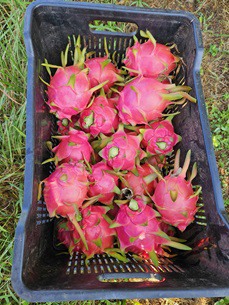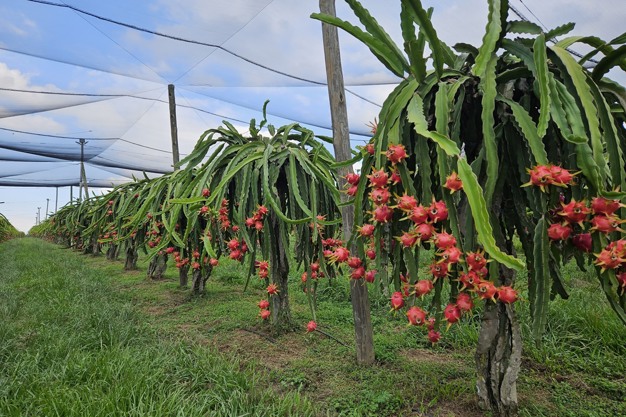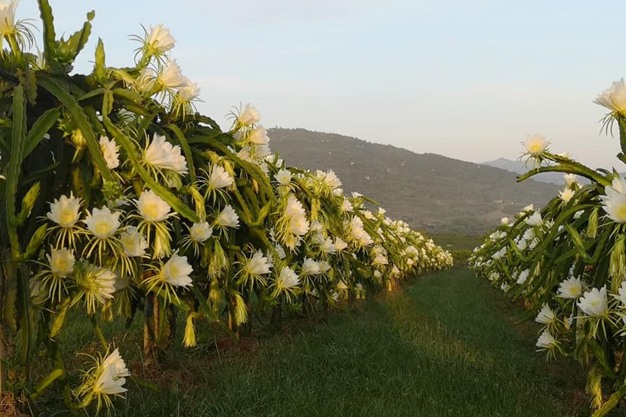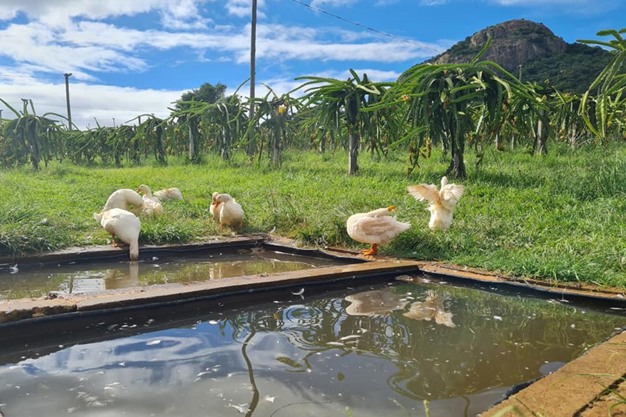 When Kuifkop Boerdery started growing dragon fruit in Nelspruit, Mpumalanga, they expected it to appeal to smoothie-making people searching for Instagrammable ingredients. But ten years on and the diversity among dragon fruit consumers has turned out to be a pleasant surprise.
When Kuifkop Boerdery started growing dragon fruit in Nelspruit, Mpumalanga, they expected it to appeal to smoothie-making people searching for Instagrammable ingredients. But ten years on and the diversity among dragon fruit consumers has turned out to be a pleasant surprise.
"When you spend a day at the Johannesburg fresh market, watching who's buying dragon fruit, it becomes clear it's mostly independent shopkeepers, often in Chinese or Taiwanese communities. And what's interesting," remarks Fred Steyn, shareholder of Kuifkop Boerdery, "is that at the Pretoria market, you will see a whole different set of buyers, among them customers coming from Limpopo Province and taking dragon fruit up to cash-and-carry stores around Polokwane."
Steyn, who chairs the Dragon Fruit Growers' Association of Southern Africa, says the growing appeal of dragon fruit among South Africans has been as a result of more affordable price levels as well as more dependable fruit quality. Still, he reckons at most a fifth of South Africans have heard of the tropical cactus fruit, but first-time buyers are increasingly coming back for more.
"Prices have come more in line, in the process opening dragon fruit up to a lot more people. In my opinion, this has been a necessary development for dragon fruit so that we can grow it on scale."

Nets to protect against sunburn and hail are trialled at some blocks.
25% year-on-year growth
In South Africa there are eight commercial dragon fruit farmers on, at last count, 120 hectares (of which about half are plantings by small-scale or part-time growers). Much more than that couldn't currently be absorbed by the domestic market, he notes.
"If I take our own volumes placed in the local market over the last five years, we're seeing a 25% year-on-year growth. Over the past two years, local retailers have also started taking higher volumes. There is a good market for loose sales."
The dragon fruit crop flowered six weeks late this year; where they can sometimes start by late December, the 2024 crop was only ready for harvest by February, but it was worth waiting for the well-sized, high-quality dragon fruit.

Exporting half the crop
Half of Kuifkop's dragon fruit crop is exported, primarily to Europe and the UK, with a smattering going to the Middle East, all by air. Their export season finishes in June.
"A good amount goes to UK retail, where they're looking for smaller fruit, while we're doing more wholesale business in Europe. Around half of our export fruit is marketed under the Kuifkop brand."
No chemical crop protection products are registered on dragon fruit in South Africa, and since Kuifkop's export crop has to contain zero residues, they've been farming biologically to a large degree.

Ducks are used to control pests in Kuifkop's dragon fruit orchards, reducing pesticide usage.
Steyn observes that one of the major challenges to farming dragon fruit is the level of involvement required in the marketing process. "You can't just deliver it to a receiver or a processor and leave them to it. You have to study the development of your markets and the varieties that would suit those markets. Therefore, we're not expanding with more than two hectares at a time, carefully selected on the basis of market segment growth and varieties."
For more information:
Fred Steyn
Kuifkop Boerdery
Tel: +27 82 469 3328
Email: fred.steyn@gmail.com
